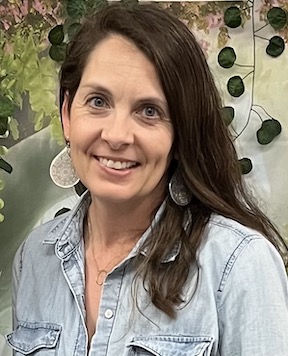The Depth of Sisterhood
Claire Jiménez’s debut novel explores the impact of a family tragedy
Turn to the back of any novel, and you will find the acknowledgments page. Here is the author’s gratitude to those who have shaped the book — writing groups, first readers, agents, editors. Here, too, is the author’s thanks to friends and loved ones, with the last words usually considered the place of highest honor. Consider then how Vanderbilt M.F.A. alum Claire Jiménez closes the acknowledgments of her debut novel What Happened to Ruthy Ramirez: “And to my sisters for kicking my ass and keeping me honest. Thank you for making me laugh. This book is for you.”
 What Happened to Ruthy Ramirez opens with a similar sort of acknowledgment, a brief sketch of the Ramirez family, Puerto Rican and proud of their Staten Island home. The youngest, Nina, describes them, starting from teenaged Eddie and Dolores getting married in 1981, with eldest Jessica already on the way. “Two years later draw Ruthy in pencil, lightly, because you’re going to need to erase her in a couple of minutes,” Nina quips, a jarringly light comment in the face of “the hole in the middle of the timeline” — the day 13-year-old Ruthy never comes home after track practice.
What Happened to Ruthy Ramirez opens with a similar sort of acknowledgment, a brief sketch of the Ramirez family, Puerto Rican and proud of their Staten Island home. The youngest, Nina, describes them, starting from teenaged Eddie and Dolores getting married in 1981, with eldest Jessica already on the way. “Two years later draw Ruthy in pencil, lightly, because you’re going to need to erase her in a couple of minutes,” Nina quips, a jarringly light comment in the face of “the hole in the middle of the timeline” — the day 13-year-old Ruthy never comes home after track practice.
This introduction provides some of the consequences of that tragedy: the death of Eddie, the health crisis of Dolores. But it glosses over the impact on the sisters, leaving that story to unfold over the course of the book. The chapters are mostly given to Nina and Jessica, weaving the present day with their memories of the events surrounding Ruthy’s disappearance. The use of multiple narrators proves a clever choice by Jiménez, giving the narrative the same fire and pace as a heated exchange between siblings. Interrupting their banter are occasional chapters from Ruthy herself, written in third person and gradually meting out the details of the day she went missing. Also present is Dolores, with her sections written as an extended conversation with God, albeit one laced with profanity and snark.
 For years, Jessica has been taking care of Dolores while Nina pursues a degree in biology and keeps her distance. After graduating with no medical school prospects, Nina returns home to face her family with all its drama and obligations. When the two sisters think they see Ruthy on a trashy reality TV program (called Catfight), Nina is skeptical, but Jessica’s certainty wears her down, and before long they are making plans to go find Ruthy.
For years, Jessica has been taking care of Dolores while Nina pursues a degree in biology and keeps her distance. After graduating with no medical school prospects, Nina returns home to face her family with all its drama and obligations. When the two sisters think they see Ruthy on a trashy reality TV program (called Catfight), Nina is skeptical, but Jessica’s certainty wears her down, and before long they are making plans to go find Ruthy.
On one level, this book is a fast-paced, engrossing mystery. Readers will be pulled along, anxious to find out if the woman on the TV is, in fact, the long-lost sister. But the title doesn’t have a question mark. What Happened to Ruthy Ramirez is less a question itself and more the answer to a different question about the complexities of sisterhood and identity.
Spurred by their desire to find their sister, Nina and Jessica get sucked in by the Catfight show, an exploitative program where young women move into a shared house with the expectation that they will fight. When they do, the loser is sent packing. Though these women choose to be on the show, the limitations of their agency are clear as their bodies are objectified, their identities flattened, and their anger rendered nothing more than spectacle. Nina knows all this and asks, “Whose design was it to choreograph such violence between these women, who was really in charge, and why could I not stop watching?”
Under the snappy dialogue and ferocity of the Ramirez women’s search lie all the things that haunt them and women like them: discrimination, lack of opportunity, societal expectations, abuse. Nina and Jessica, like women everywhere, have no real place to put their rage, so they often direct it at each other, just like the girls on Catfight. It’s the reason the sisters cheer at the girl on the screen getting dragged across the floor by her extensions. “Because,” Nina explains, “we were angry, angry that Ruthy’d been gone, angry for what might have or might not have happened to her, or to our mother, or to our father or to us — if in reality Ruthy had decided to stay or if she had not been taken.”
When they finally confront the cast of Catfight, readers will understand the depth of sisterhood — the way it can embolden and break us, build us up, or tear us down. It is our sisters who make us who we are. What Happened to Ruthy Ramirez has happened to all of us, in different ways across every generation, and the magic of Jiménez’s tremendous debut is that it never stands on a righteous soapbox, yet the message is clear, down to the last word of the acknowledgments.

Sara Beth West is a school librarian and a freelance writer focusing on book reviews and author interviews. In addition to Chapter 16, publications include Shelf Awareness, BookPage, Southern Review of Books, and more. She lives in Chattanooga.


